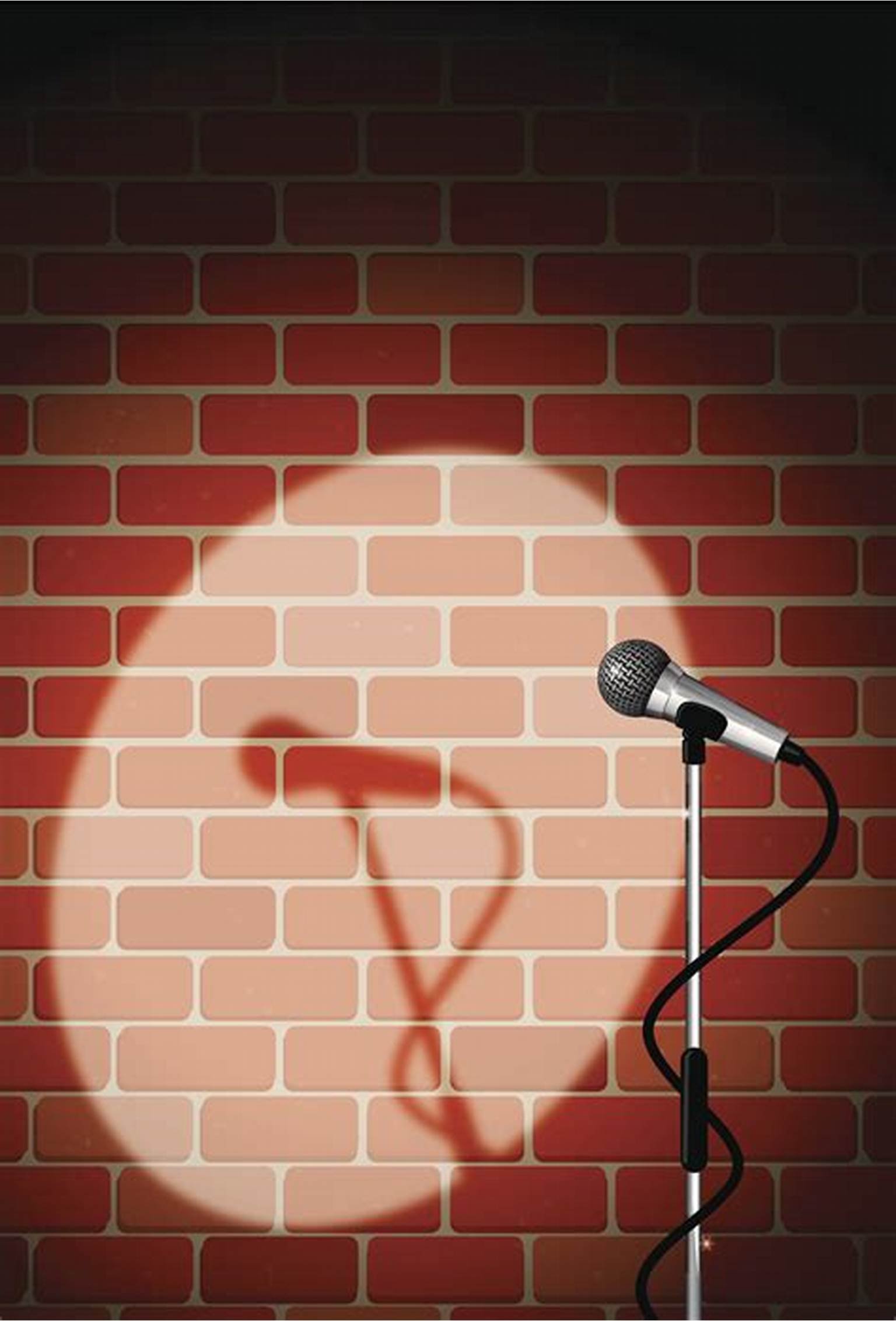The right ambiance can make or break a comedy show. Whether you’re attending a world-class stand-up performance in a major city or enjoying a local comic’s set at a small club, the venue plays an essential role in shaping the experience. A great comedy venue doesn’t just offer a stage and a microphone; it creates an environment where both the comedian and the audience feel comfortable, engaged, and ready to laugh. From lighting to acoustics to seating arrangements, every detail contributes to the overall atmosphere.
So, what makes a great comedy venue? Here’s a deep dive into the factors that create the perfect ambiance for laughter and entertainment.
1. Lighting That Enhances the Performance
Lighting is one of the most important elements when setting the right atmosphere in a comedy venue. Proper lighting doesn’t just highlight the performer—it can control the mood and energy of the entire room.
- Spotlighting the Comedian: A good comedy venue ensures that the performer is the main focus of the room. Stage lighting should emphasize the comedian without overshadowing them with harsh brightness. Soft, warm lighting is often ideal, as it creates a relaxed vibe.
- Mood Lighting for the Audience: The ambiance for the audience is just as important. Dim lighting in the audience area helps create a more intimate atmosphere, while still allowing people to see each other and feel connected. A venue should strike a balance between giving performers full attention and creating a comfortable space for the audience.
- Adjustable Lighting for Different Tones: Some venues use adjustable lighting systems to change the mood depending on the type of comedy being performed. For example, brighter lighting may be used for more interactive or lively performances, while softer, more subdued lighting works well for storytelling or intimate comedy.
2. Acoustics That Enhance the Experience
The sound quality in a comedy venue can drastically affect the audience’s enjoyment. In stand-up comedy, timing, delivery, and the punchline are everything, so it’s crucial that the sound is clear and crisp. Poor acoustics can turn a perfectly timed joke into a missed opportunity.
- Good Sound Systems: A top-tier comedy venue will have a sound system that’s calibrated to ensure that every word the comedian says is heard clearly. Whether it’s a small club or a large theater, the sound system must be fine-tuned to avoid echo, distortion, or feedback.
- Acoustic Design: The layout and materials of the venue matter. Venues that have been specially designed for performance, with soft materials that reduce sound bouncing (like carpets, curtains, and acoustic panels), will create the best auditory experience. Hard surfaces like brick or metal can lead to unwanted echoes, which can muddle sound and ruin punchlines.
- Microphone Placement: A good microphone and speaker setup is essential. The mic should be positioned in such a way that the comedian’s voice is amplified evenly throughout the space. Too close and the sound may be distorted; too far and it will be hard to hear.
3. Seating Arrangements That Encourage Interaction
The seating arrangement plays a critical role in how the audience connects with the comedian and each other. A comedy venue should foster an environment where people feel involved and relaxed enough to laugh without inhibition.

- Intimate Layout: For smaller venues, seating arrangements should focus on intimacy. Arranging chairs or tables in close proximity to the stage ensures that the audience feels connected to the performance. It also allows for better audience interaction, as comedians can engage more easily with people in the front rows.
- Riser Stages: In larger venues, riser stages or elevated platforms allow the performer to be seen by everyone in the audience. Even in smaller clubs, a slightly raised stage can create a stronger presence for the performer, enhancing the overall experience.
- Comfortable and Flexible Seating: Comedy shows are often several hours long, so comfort matters. Venues should offer chairs or seats that are comfortable for extended periods. For larger venues, offering a mix of seating styles (such as bar stools, chairs, and booths) can provide variety and appeal to different audiences.
- Crowd Density and Spacing: A packed crowd can be exciting, but it’s important to find a balance. Too many people crammed into a small space can make the experience uncomfortable and distract from the show. Ideally, there should be enough room for people to feel at ease while still maintaining a full, energetic atmosphere.
4. A Welcoming and Engaging Atmosphere
The right atmosphere encourages people to relax, have fun, and laugh freely. A comedy venue needs to create a welcoming space where both performers and audience members feel comfortable.
- Warm and Inviting Decor: The decor sets the tone before the first joke is even told. A comedy venue’s interior design should be fun and quirky but not overbearing. Bold posters of iconic comedians or clever, humorous artwork can add character to the venue without overwhelming the space.
- Minimal Distractions: The focus should be on the performance. A great comedy venue avoids distractions—such as overly bright lights or loud background music—that might take attention away from the comedian. The space should be optimized for the comedic experience, encouraging guests to focus on the performance.
- Friendly Staff: A great comedy venue is not just about the physical space but also the people. Friendly, helpful staff who greet patrons with enthusiasm and maintain a positive environment contribute to the overall ambiance. Staff should also be attentive but unobtrusive during the performance, ensuring guests are comfortable and well taken care of.
5. Proper Stage Design and Visibility
A well-designed stage is essential for both the performer’s success and the audience’s experience. The stage must be visible from every angle of the venue, and its design should support the comedian’s act.
- Clear View from All Angles: No one wants to pay for a ticket and then struggle to see the comedian. The stage should be designed to be visible from every part of the venue, with no obstructed views. If the venue is larger, good sightlines become even more crucial to ensure everyone has a great view of the performance.
- Appropriate Stage Setup: The stage should be simple but equipped with the necessary tools for the comedian to perform their best. This includes a microphone, spotlight, and minimal distractions. A cluttered stage could distract from the performance or become an obstacle for the comedian.
- Stage Presence: The comedian’s stage presence is vital to delivering their set effectively. A stage that feels too large for a smaller performance can make the comedian appear distant, while a cramped stage can make the performance feel constrained. Balancing the stage size with the performer’s style can help improve the audience’s connection with the comedian.
6. Accessibility and Comfort
Accessibility is a crucial consideration for any great comedy venue. Ensuring that the venue is comfortable and welcoming to all audiences, regardless of their physical abilities or preferences, should be a priority.
- Wheelchair Accessibility: Venues should be designed with accessibility in mind, providing wheelchair ramps, designated seating areas for those with mobility issues, and easy access to bathrooms and exits.
- Temperature Control: A good comedy venue maintains a comfortable temperature, not too hot or cold. Extreme temperatures can detract from the enjoyment of the show, leaving audience members distracted and uncomfortable.
- Convenient Location and Parking: Venues that are easy to get to, whether by public transportation or car, will attract more patrons. A venue with ample parking or close proximity to public transport options makes it convenient for attendees, especially for those arriving with limited time.
7. Food and Beverage Options That Complement the Experience
Food and drink offerings can add to the enjoyment of a comedy show, turning a good night out into a memorable experience.
- Bar and Dining Areas: Many successful comedy venues include bars or food service areas where patrons can grab a drink or bite before, during, or after the show. Offering a variety of drink options—from cocktails to non-alcoholic beverages—and simple, easy-to-eat snacks can help guests feel more comfortable and relaxed.
- Themed Menu Items: Some comedy venues even integrate humor into their food and beverage offerings. Comedic-themed cocktails or snack names can enhance the overall atmosphere and provide another layer of fun to the experience.
- Efficient Service: While food and drinks can be an essential part of the venue’s offerings, it’s crucial that service does not interfere with the performance. Waitstaff should be unobtrusive, making sure they serve guests quickly without disrupting the flow of the comedy show.
Conclusion
The right ambiance can turn a simple comedy night into a truly unforgettable experience. From carefully crafted lighting and acoustics to a thoughtful seating arrangement and personalized service, every element in a comedy venue plays a role in creating the perfect atmosphere for laughter. Whether it’s a cozy local club or a large theater, the best comedy venues prioritize comfort, connection, and engagement—ensuring that every guest has an enjoyable and immersive experience. With the right attention to detail, comedy venues can offer a space where both comedians and audiences feel energized, connected, and ready to share in the joy of a great performance.



